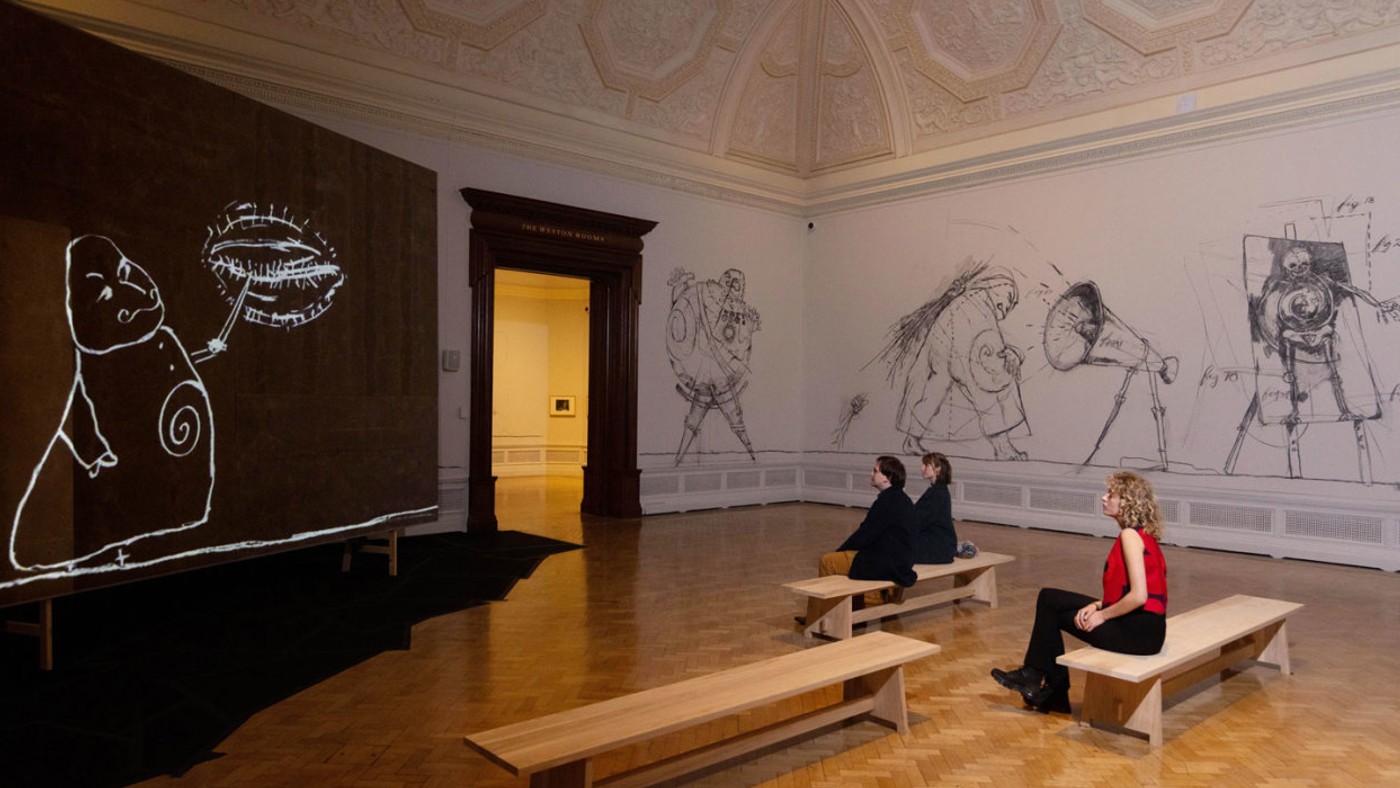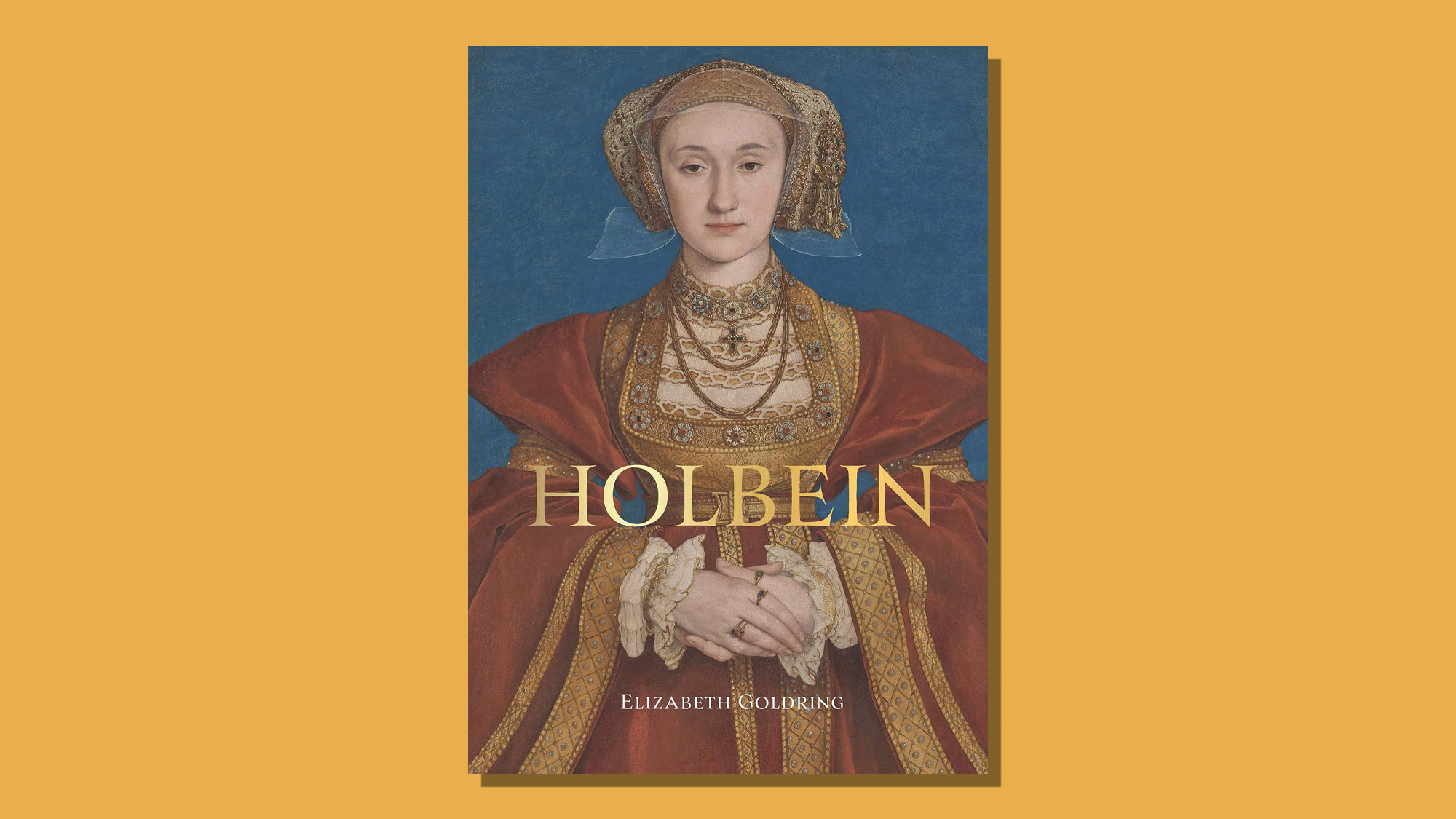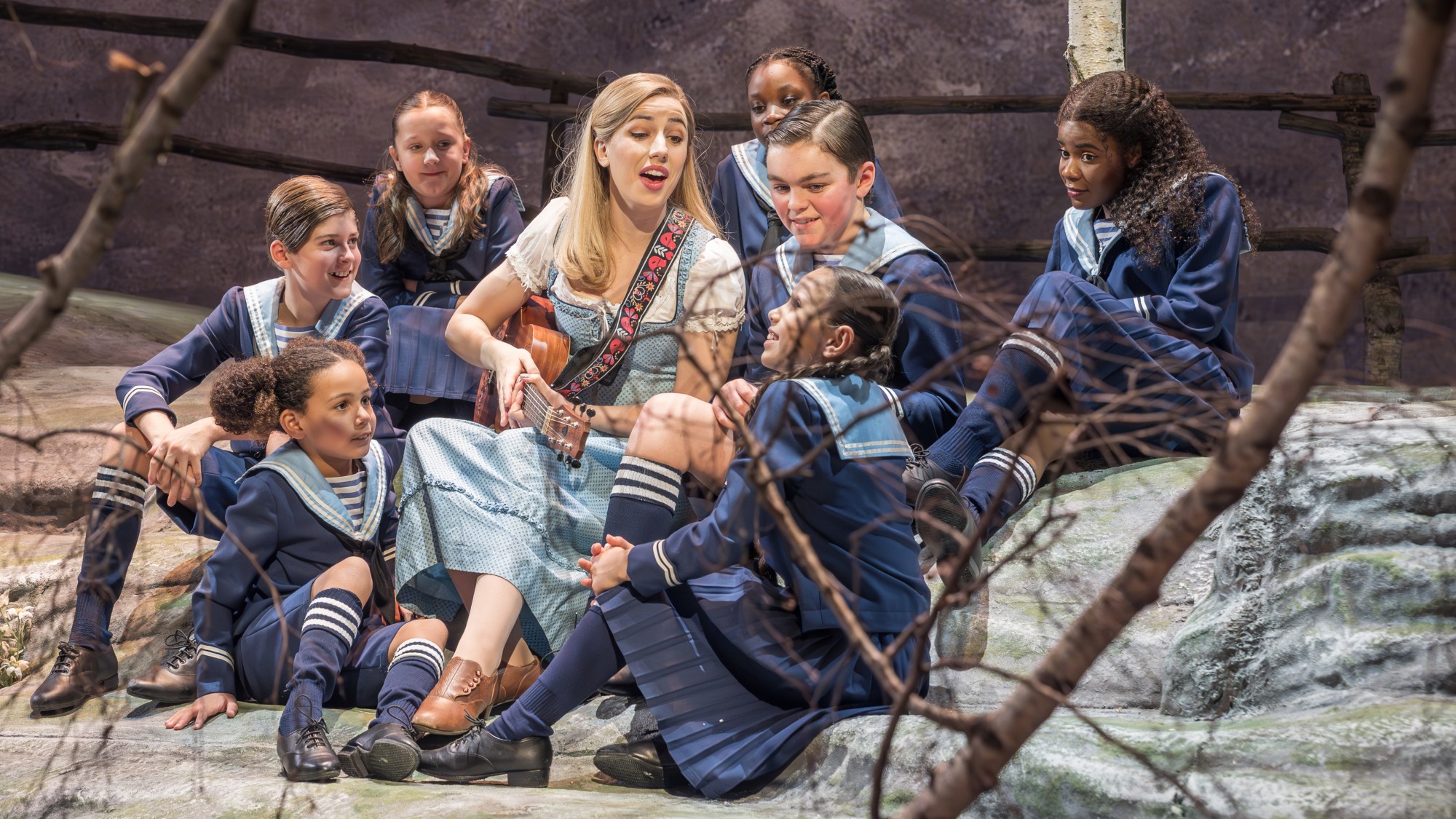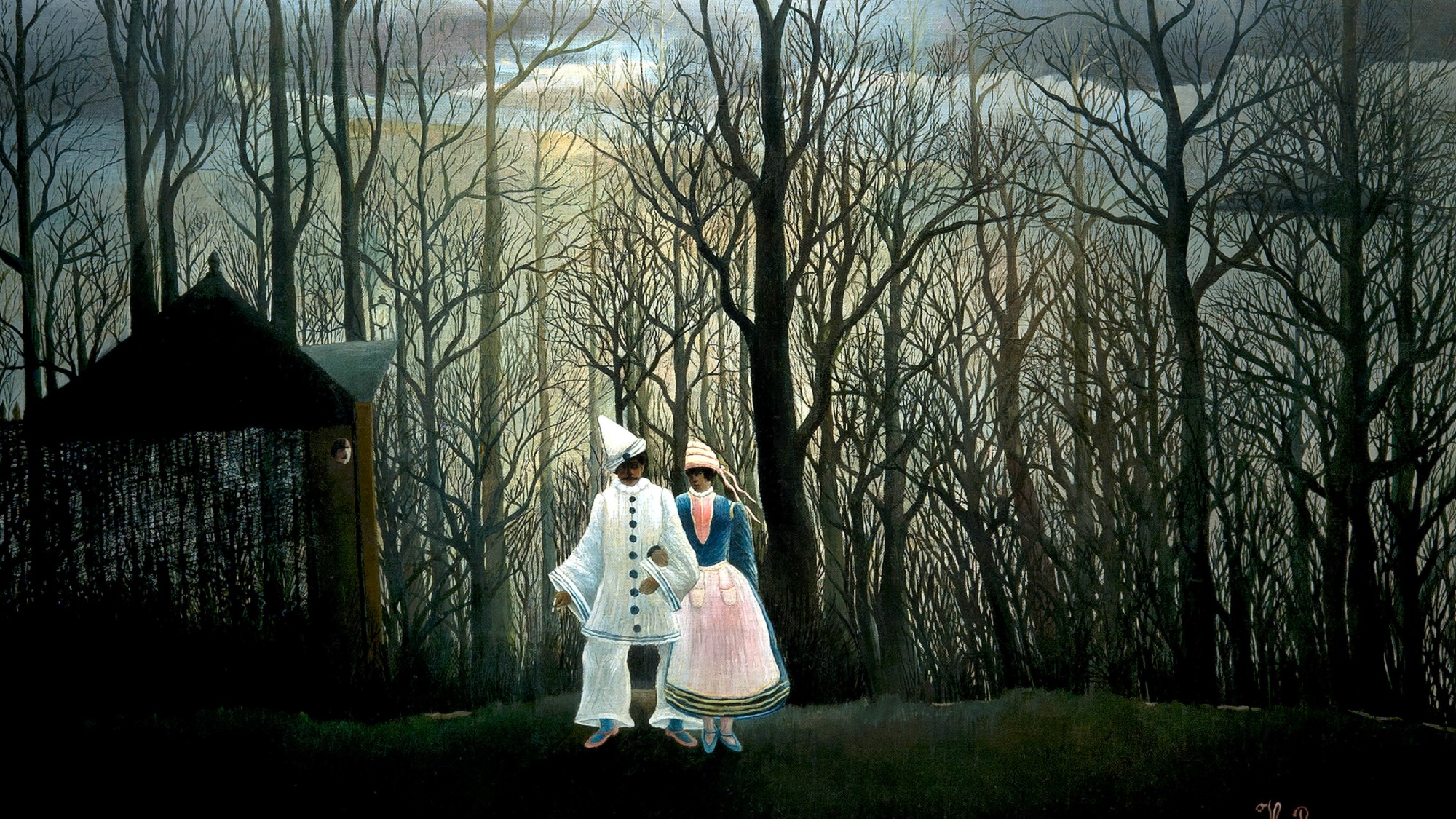William Kentridge at the RA: a spellbinding but incoherent show
Exhibition tracks Kentridge’s experimental career from the late 1970s to the present day

Few artists have been as “fiercely involved” with their times as William Kentridge, said Waldemar Januszczak in The Sunday Times. Born into a liberal white family in Johannesburg in 1955, he lived through the apartheid era at its height, and sought to respond to the repression and resistance of the black community via his art.
A supremely talented draughtsman, he became known first for sinister black and white drawings and scratchy “homemade animations” that “morosely” communicated the “horror” of apartheid. Over the decades, he would experiment with pretty much every other artistic medium – “sculpture, tapestry, film, word art, opera” – to recount “the story of the black struggle”.
This “extraordinary” exhibition tracks Kentridge’s career from the late 1970s to the present day, bringing together “a dizzying array of forms and media” that testify to his relentless experimentation and bold vision. Rarely will you see a display by a living artist that is “packed with so much art, in so many different formats”.
The Week
Escape your echo chamber. Get the facts behind the news, plus analysis from multiple perspectives.

Sign up for The Week's Free Newsletters
From our morning news briefing to a weekly Good News Newsletter, get the best of The Week delivered directly to your inbox.
From our morning news briefing to a weekly Good News Newsletter, get the best of The Week delivered directly to your inbox.
Kentridge’s “political consciousness” is apparent from the earliest works here, said Alastair Smart in The Daily Telegraph. His large charcoal drawings from the 1980s convey his “disdain” for South African society – government officials are depicted as “warthogs and scavenging hyenas”; these drawings then developed into his famous series of stop-motion animated films, Drawings for Projection, which feature two recurring characters – a “poor but dreamy artist” and his nemesis, a “rapacious, cigar-smoking industrialist”. Five are on show here, and they make for “compelling viewing”.
Alas, much of the rest of this incoherent show is “misfire after misfire”. There is nothing wrong with an artist being erudite, but it’s hard to imagine many visitors to the Royal Academy making sense of a multiscreen projection that “mimics the officially sanctioned operas of the Cultural Revolution”; or of a film in which we see the artist flipping through an avant-garde novel by the 19th century Brazilian author Joaquim Maria Machado de Assis. Kentridge is strongest when tackling themes related to South Africa; at other times, he “creates with too much head and not enough heart”.
Kentridge’s art is not easy, said Jackie Wullschläger in the FT. He set out to create (in his own words) political art “of ambiguity, contradiction, uncompleted gestures and uncertain endings”. And what this spellbinding show delivers – via works that range from a miniature mechanised theatre, featuring a colonial-era film of a rhino hunt, to a mohair tapestry of refugee boats bobbing on a map – is a “theatre of the absurd” that amounts to a “withering critique of racist brutality and postcolonial global inequality”.
Royal Academy, London W1. Until 11 December
A free daily email with the biggest news stories of the day – and the best features from TheWeek.com
-
 What role will Trump play in the battle over Warner Bros. Discovery?
What role will Trump play in the battle over Warner Bros. Discovery?Today’s Big Question Netflix and Paramount fight for the president’s approval
-
 ‘The menu’s other highlights smack of the surreal’
‘The menu’s other highlights smack of the surreal’Instant Opinion Opinion, comment and editorials of the day
-
 Education: More Americans say college isn’t worth it
Education: More Americans say college isn’t worth itfeature College is costly and job prospects are vanishing
-
 It Was Just an Accident: a ‘striking’ attack on the Iranian regime
It Was Just an Accident: a ‘striking’ attack on the Iranian regimeThe Week Recommends Jafar Panahi’s furious Palme d’Or-winning revenge thriller was made in secret
-
 Singin’ in the Rain: fun Christmas show is ‘pure bottled sunshine’
Singin’ in the Rain: fun Christmas show is ‘pure bottled sunshine’The Week Recommends Raz Shaw’s take on the classic musical is ‘gloriously cheering’
-
 Holbein: ‘a superb and groundbreaking biography’
Holbein: ‘a superb and groundbreaking biography’The Week Recommends Elizabeth Goldring’s ‘definitive account’ brings the German artist ‘vividly to life’
-
 The Sound of Music: a ‘richly entertaining’ festive treat
The Sound of Music: a ‘richly entertaining’ festive treatThe Week Recommends Nikolai Foster’s captivating and beautifully designed revival ‘ripples with feeling’
-
 ‘Furious Minds: The Making of the MAGA New Right’ by Laura K. Field and ‘The Dream Factory: London’s First Playhouse and the Making of William Shakespeare’ by Daniel Swift
‘Furious Minds: The Making of the MAGA New Right’ by Laura K. Field and ‘The Dream Factory: London’s First Playhouse and the Making of William Shakespeare’ by Daniel SwiftFeature An insider’s POV on the GOP and the untold story of Shakespeare’s first theater
-
 Henri Rousseau: A Painter’s Secrets
Henri Rousseau: A Painter’s Secretsfeature Barnes Foundation, Philadelphia, through Feb. 22
-
 Homes with great fireplaces
Homes with great fireplacesFeature Featuring a suspended fireplace in Washington and two-sided Parisian fireplace in Florida
-
 Film reviews: ‘The Secret Agent’ and ‘Zootopia 2’
Film reviews: ‘The Secret Agent’ and ‘Zootopia 2’Feature A Brazilian man living in a brutal era seeks answers and survival and Judy and Nick fight again for animal justice
